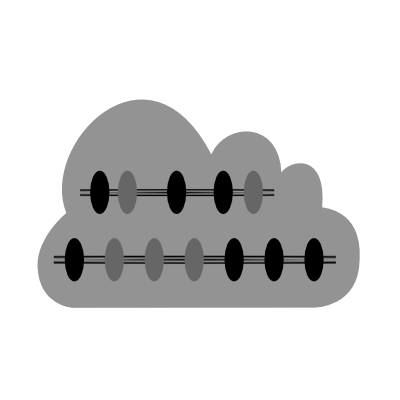Slices¶
The top-level slices dictionary in your metadata contain instructions for “slicing” a long trajectory into a single file. This has a number of advantages for users who have completed a production run which spans many different parts. The slicing procedure also (crucically) can be used to reassemble molecules which are broken across periodic boundaries, which always happens when you restart your GROMACS simulation.
Each entry in the slices dictionary should be a formal simulation name. That is, it must be the folder name for a simulation that can be identified via paths.yaml. Recall that you are free to map these simulation names to more convenient, human readable names later on, using the meta dictionary or the internal variables feature.
Each entry in the slices dictionary must contain two children. The slices entry is a dictionary of slice definitions. The keys correspond to slice names which are only used internally to keep track of the slices (note that the calculations retrieve slices by using these names, which do not have to be unique across simulation entries). The slice dictionary must contain a few keys. The groups key must provide a list of group names which we will describe in a moment. You must also include start, end, and skip which correspond to simulation times sent to the GROMACS trjconv utility. These should all be floats or integers specified in picoseconds.
The parallel groups entry should be a dictionary of selection commands which are fed first to the GROMACS make_ndx command to specify the contents of a particular trajectory slice. In the simplest case, you should include all:all if you want to retain all molecules in your slice. You may find it economical to make some slices which only contain a part of your system. These names should be added to the groups key in the slice definition. The following example should make this clear.
slices:
membrane-v123:
groups:
all: all
ions: +selectors/ions
slices:
current: {'pbc':'mol','groups':['all'],'start':10000,'end':110000,'skip':100}
current_ions: {'pbc':'mol','groups':['ions'],'start':10000,'end':110000,'skip':1}
The name of each slice is only used by omnicalc to keep track of that slice later on. For example, when you design calculations, you can run a single calculation over all slices of a particular name. Remember that the names do not have to be unique for each simulation. In the example above, we create two kinds of slices (current and current_ions) which can be accessed by different calculations. The current_ions slice is sampled at a much higher rate (in this case skip=1 so the frames are written every picosecond) and could be sent to a calculation which only requires the positions of the ions.
